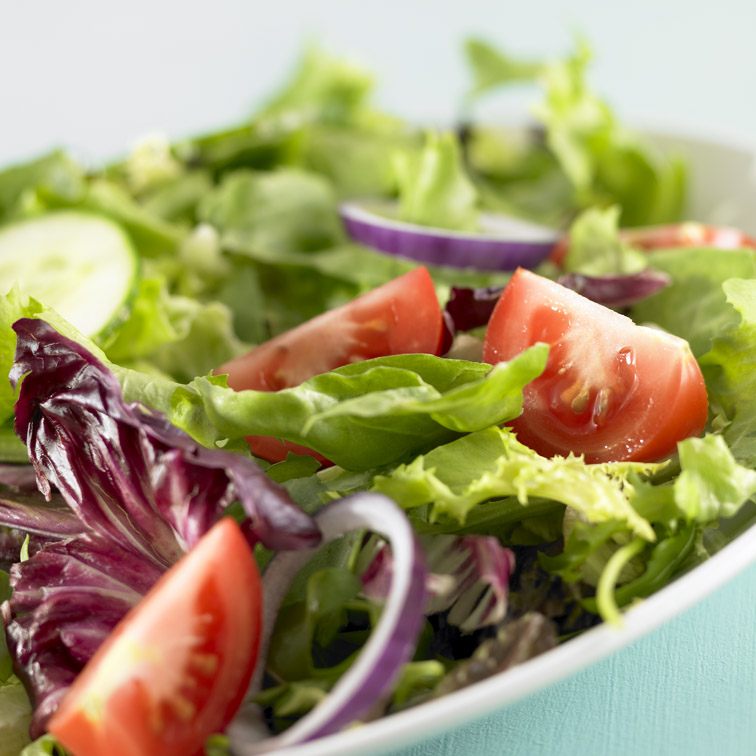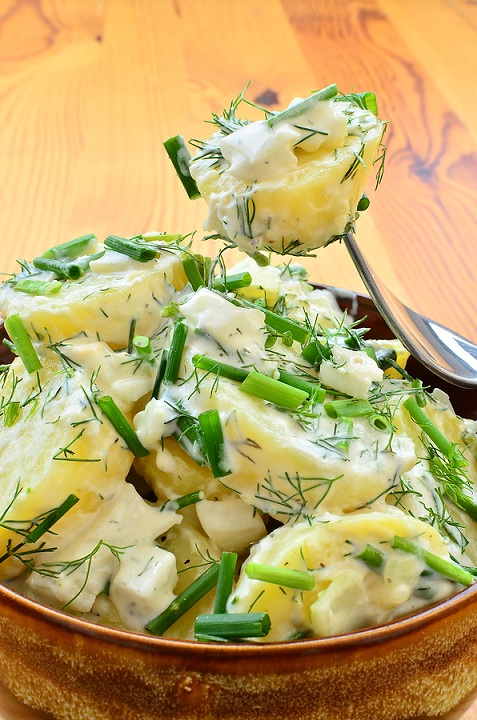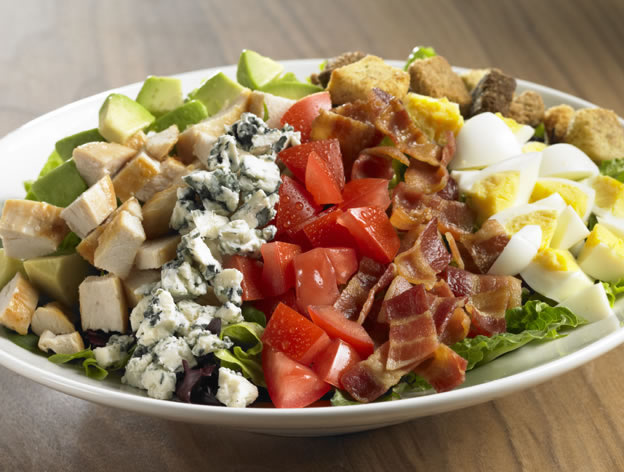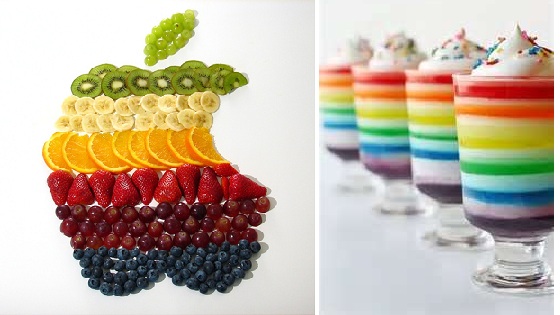Foods 2090 Lessons
Foods 2090 Lessons
Salad and Salad Dressings
Lesson Questions:
- Describe the various types of salads.
- Identify the four main parts of a salad.
Lesson:
Salads are a category of dishes commonly based on raw vegetables served with a sauce or dressing including oil and an acid as a light savory dish, with a minimum of three ingredients.
Salads may be served at any point during a meal, such as:
- Appetizer salads, light salads to stimulate the appetite as the first course of the meal.
- Side salads, to accompany the main course as a side dish.
- Main course salads, usually containing a portion of protein, such as chicken breast or slices of beef.
- Palate-cleansing salads, to settle the stomach after the main course.
- Dessert salads, sweet versions usually containing fruit, gelatin or whipped cream.
There are many types of salads:
The "green salad" or "garden salad" is most often composed of leafy vegetables such as lettuce varieties, spinach, or rocket (arugula). Due to their low caloric density, green salads are a common diet food. The salad leaves may be cut or torn into bite-sized fragments and tossed together (called a tossed salad), or may be placed in a predetermined arrangement (a composed salad).
 Vegetable salad
Vegetable salad
Vegetables other than greens may be used in a salad. Common raw vegetables used in a salad include cucumbers, peppers, tomatoes, mushrooms, onions, spring onions, red onions, carrots, celery, and radishes. Other ingredients, such as avocado, olives, hard boiled egg, artichoke hearts, heart of palm, roasted red bell peppers, green beans, croutons, cheeses, meat (e.g. bacon, chicken), or seafood (e.g. tuna, shrimp), are sometimes added to salads.
Bound salad
A "bound" salad can be composed (arranged) or tossed (put in a bowl and mixed with a thick dressing). They are assembled with thick sauces such as mayonnaise. One portion of a true bound salad will hold its shape when placed on a plate with an ice-cream scoop. Examples of bound salad include tuna salad, pasta salad, chicken salad, egg salad, and potato salad. Bound salads are often used as sandwich fillings. They are also popular at picnics and barbecues, because they can be made ahead of time and refrigerated.
Main course salads
Main course salads may contain grilled or fried chicken pieces, seafood such as grilled or fried shrimp or a fish steak such as tuna, mahi-mahi, or salmon. Sliced steak, such as sirloin or skirt, can be placed upon the salad. Caesar salad, Chef salad, Cobb salad, Greek salad, and Michigan salad are types of dinner salad.
Fruit salads
Fruit salads are made of fruit, and include the fruit cocktail that can be made from fresh or from canned fruit.
Dessert salads
Dessert salads rarely include leafy greens and are often sweet. Common variants are made with gelatin or whipped cream; e.g. jello salad, pistachio salad, and ambrosia.
There are four parts to a typical salad:
1. Body - the main ingredient of the salad. It's the lettuce in a green salad, the mix of veggies in a vegetable salad, the main ingredient in a bound salad, etc.

2. Garnish - adds texture, color and form.
Popular salad garnishes are nuts, croutons, anchovies, bacon bits (real or imitation), garden beet, bell peppers, shredded carrots, diced celery, watercress, sliced cucumber, fresh herbs, sliced mushrooms, sliced red onion, radish, french fries, sunflower seeds (shelled), real or artificial crab meat (surimi) and cherry tomatoes. Even trailmix works well - the kind without chocolate of course! Various cheeses, berries, seeds and other ingredients can also be added to green salads. Cheeses, in the form of cubes, crumbles, or grated, are often used, including blue cheese, Parmesan cheese, and feta cheese. Color considerations are sometimes addressed by using edible flowers, red radishes, carrots, various colors of peppers, and other colorful ingredients.

3. Dressing -used to enhance the flavor
There are three basic types of salad dressing:
- Vinaigrette is a mixture (emulsion) of salad oil and vinegar, often flavored with herbs, spices, salt, pepper, sugar, and other ingredients.
- Creamy dressings, usually mayonnaise-based, but which may also contain yogurt, sour cream, buttermilk, milk, or crème fraiche
- Cooked dressings, which resemble creamy dressings, but are usually thickened by adding egg yolks and gently heating.
Once you learn how to make your own dressings you'll never need (or want) to buy them again! Here's a recipie to try on your next green salad.


